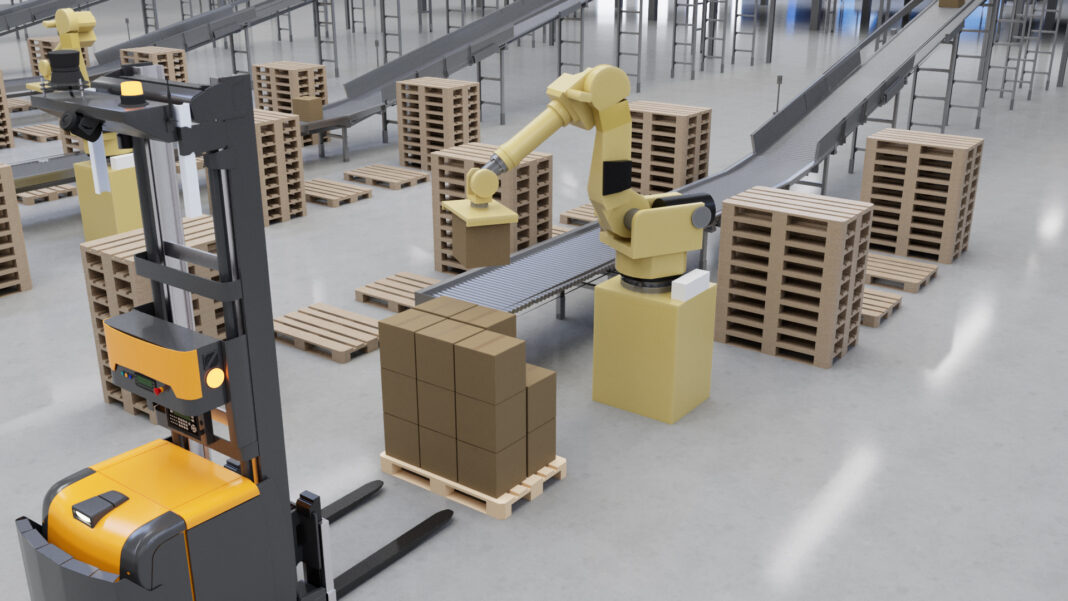BEUMER Group shared its vision of dark warehouse operations at LogiMAT 2024 which took place in March.
As a leading global supplier of automated material handling systems, the company is already developing the innovative systems and services that will support the transition to ‘lights out’ operation.
Examples at this year’s show include the BG Pouch System and BEUMER Flow Software Suite, as well as 24/7 remote monitoring available via the new BEUMER Customer Diagnostic Center.
“The expectation today is that virtually any size and quantity of an item can be delivered on demand,” says Gregor Baumeister, Director Warehousing & Distribution Logistic Systems, BEUMER Group.
“This trend is likely to continue, and automation underpins the transition to dark warehousing, supported by exciting developments in AI and data analytics.
BEUMER Group is already imagining what the world of warehousing and distribution will look like in ten years’ time, and developing the systems and services that will enable warehouse operators, logistics managers and third-party logistics (3PL) companies to achieve efficient omnichannel distribution from a single automated facility.”
By providing end-to-end automated handling solutions, including powerful diagnostic services, BEUMER Group is committed to being ‘easy to do business with’, and acts as a single source supplier for the technology, software and lifecycle support that will facilitate the evolution of dark warehousing.
Visions of the future: dark, but brighter
What will the 2035 BEUMER fashion fulfilment center look from the inside? In the future, humans can concentrate on more purposeful and productive activities, trusting more in robots and automation in physically demanding environments like warehouses or fulfilment centres.
The receiving dock is a hive of activity, where humanoid robots on legs or wheels whiz around and unload cartons from newly arrived sea containers.
The robots put the cartons onto takeaway conveyors feeding a high speed BEUMER receiving sorter. From here cartons are distributed to either robotic palletizers for reserve storage or directly forwarded to the GTP (goods-to-person) storage and picking system.
Even the most complex handling tasks, previously reserved for humans in GTP applications, can now be safely and reliably executed by the BEUMER robots, which work autonomously.
This is possible in 2035 due to rapid evolutions in the processing power of digital analytics and the speed of cloud-based applications, coupled with advances in vision and AI technology as well as grippers.
The autonomous robots now feed the order fulfilment engine – the BG Pouch System.
Processing more than 10,000 items per hour, the pouch system can accommodate not only flat pack garments from the GTP system but also garments-on-hangers (GoH), consolidating multiple process steps into one single and simple flow.
The pouch system also can accommodate return items efficiently, bypassing all storage and picking processes and minimising the time to resale.
Customer orders are fully automatically assembled with the highest accuracy and service level by the BG Pouch System. At the packing station items are automatically unloaded into packing machines using sustainable and resource-optimised materials.
The system is equipped with highly programmable sortation options, for store or shelf-replenishment, or to match shipping sequences.
Ready packaged goods are finally distributed to their sort destinations via BEUMER Dispatch Cross-Belt Sorter, renowned for its outstanding performance, robustness and flexibility to handle the widest range of items.
At the sort destination automated guided vehicles (AGVs) pick up shipping containers for e-commerce orders and load them into the vehicles of contracted CEP service providers.
In the case of retail store replenishments, cartons or totes are directly routed to pick-up points where autonomous robots load trailers or containers.
Concludes Gregor Baumeister: “Visitors to the BEUMER Group stand at LogiMAT 2024 will be able to discover how close we are already to realising the dark warehouse.
Robotics and sorting technologies are available now, and advances in software and diagnostics are already enabling more efficient monitoring and optimisation of warehouse operations.
Soon, working in physically demanding warehousing and distribution environments will be a thing of the past. We may not have to wait until 2035 for the dawn of the dark warehouse.”
Also Read
Here is the simple method hackers use to attack organisations
Tanzania seeks partners for its $40B LNG project, gas prospects


